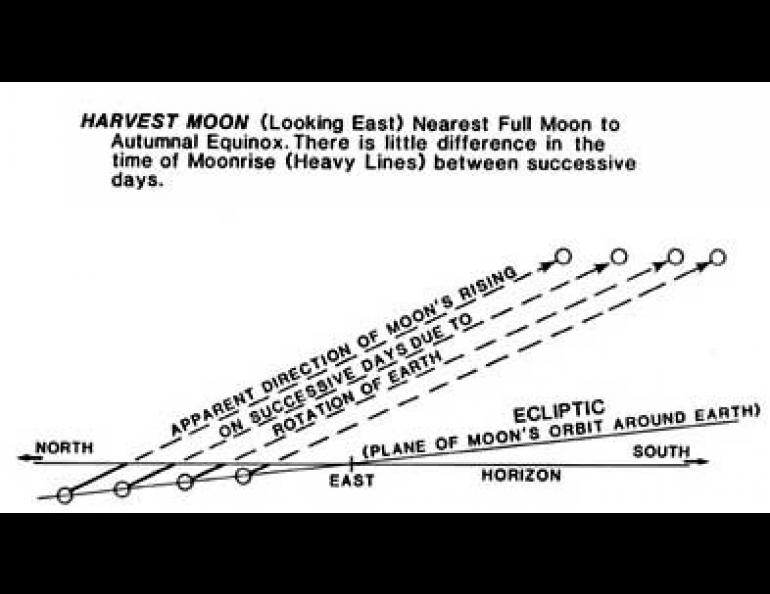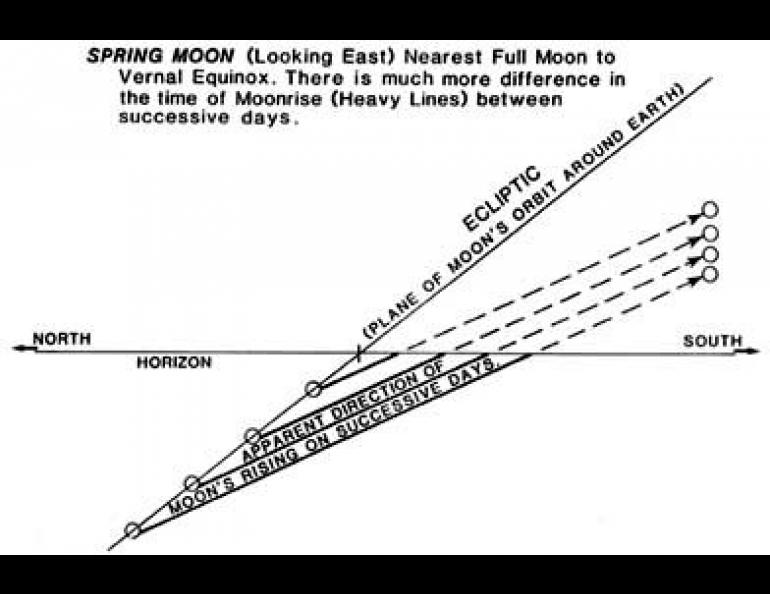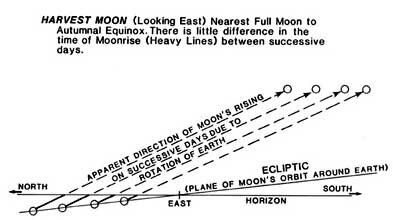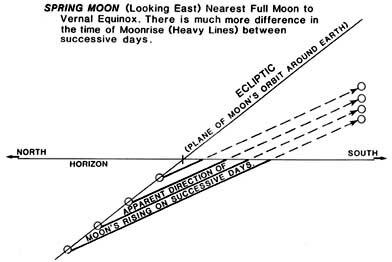

The Harvest Moon
The Harvest Moon is a help to farmers anxious to complete the garnering of their crops. It is the full moon which occurs nearest the date of the autumnal equinox. It is not brighter than other full moons, as some seem to believe. Its virtue lies in the fact that, for several nights, less time elapses between its successive risings than for any other full moon of the year. This gives farmers an extra-long sequence of evenings with bright moonlight.
I remember teaching an astronomy class several years ago, in which someone asked, "What is the Harvest Moon and what causes it?" Well, foolishly being not well prepared, I plunged to the blackboard, thinking that somewhere between the time that the thoughts came to my mind and the time that they got to the blackboard, I would have the matter straightened out. Alas! The further I went, the more things became complicated. There were too many things to visualize, and the derivations got all mixed. Everything came out wrong.
I vowed not to make that mistake again, but I broke my word. Last week Neal Brown (who is teaching this year's introductory astronomy class) said to me, "Look. You've taught this stuff. What is the Harvest Moon?" Darned if I didn't get the mental wheels all out of whack and the diagrams inside-out again. So be forewarned; the explanation can be tricky.
Let's look at what happens. At the equinox itself (September 21), there may or may not be a full moon. It depends on the year. This year the full moon fell on September 18th. When there is a full moor near the equinox, this Harvest Moon rises in the east almost exactly at the same time that the sun sets in the west. After that evening's near perfectly timed moonrise, even though the moon does rise a little later each night, the number of minutes later that it rises is less than at any other time during the year. The "retardation," or delay of moonrise from night to night, averages about 50 minutes over the course of a year. But at full Harvest Moon, the delay is only about 15 minutes at Anchorage and even less at Fairbanks.
These make for great evenings! In autumn, the full moon rises just after sunset and crops are flooded with moonlight. This lasts for days. But as the year moves onward, the angle at which the moon orbits the earth changes so that the angle at which the moon seems to climb up the sky grows steeper. By spring the moon rises so sharply that there is a much longer "waiting period" each successive night before the moon comes over the hill.






